Многие пользователи ПК и ноутбуков сталкиваются с тем, что указатель мыши «тормозит» — двигается рывками или замирает в определенные моменты, что мешает удобной работе с компьютером. Причины такого поведения могут отличаться, но обычно проблема решаема.
В этой инструкции о том, что делать, если тормозит мышь в Windows 11 или Windows 10, чем это может быть вызвано и дополнительная информация, которая может быть полезной.
Активность USB-контроллера
Первая из возможных причин — работа других устройств на том же USB-контроллере, к которому подключена мышь или её приёмник. Подробнее по пунктам:
- На ПК/ноутбуках обычно присутствует несколько USB-контроллеров, увидеть их можно в соответствующем разделе диспетчера устройств.
- Каждый контроллер обычно обслуживает несколько USB-разъемов.
- Если мышь и другое USB-устройство подключены к одному контроллеру, при этом ведется активный обмен данными с USB-устройством, указатель мыши может начать двигаться рывками.
- То же самое актуально для случая подключения мыши к USB-хабу (в том числе на мониторе) или какому-либо переходнику: если к нему же подключены другие устройства, это может влиять на работу мыши.
Распространенным симптомом для этой причины является усугубление проблем с лагами мыши при работе с другими USB-устройствами: накопителями, внешними звуковыми картами или микрофонами, веб-камерами.
Решение для этой ситуации — подключение мыши (или её приемника) к другому разъему USB:
- В случае ПК — к отдельной, не используемой другими устройствами, группе разъемов. На многих материнских платах производителем предполагается, что мышь и клавиатура будут подключены к верхним разъемам.
- Если у вас ноутбук, можно попробовать подключение на другой стороне корпуса или к порту с другой версией USB.
- Во всех случаях рекомендую использовать прямое подключение, без каких-либо адаптеров.
Проблемы радиосигнала
Для беспроводных мышек, работающих по радиоканалу, приемник которых подключается к USB-разъему, «тормоза», помимо описанной выше причины, могут быть вызваны слабой мощностью сигнала и помехами на его пути.
Например, когда грузный металлический системный блок расположен под столом, примыкающим к железобетонной стене, а приёмник мыши подключен к его задней панели, это может приводить к неуверенному соединению мыши с приёмником.
Если же поставить на системный блок Wi-Fi роутер, проблема может усугубиться: мышь и роутер могут использовать пересекающиеся частоты. Потенциально, на частоте 2.4 ГГц могут одновременно несколько различных устройств, не мешая друг другу, но у некоторых пользователей проблемы с мышью бывают вызваны именно этим.
Решение: попробовать другие варианты подключения и расположение приемника мыши, исключить наличие помех.
Энергосбережение
В случае беспроводной или Bluetooth мыши причиной замирания указателя мыши, особенно после некоторого периода неиспользования могут быть параметры энергосбережения. Возможные действия для решения проблемы:
- Откройте диспетчер устройств, в Windows 11 и Windows 10 для этого можно нажать правой кнопкой мыши по кнопке «Пуск» и выбрать нужный пункт контекстного меню.
- Откройте свойства вашей мыши в разделе «Bluetooth», «Мыши и иные указывающие устройства» или «Устройства HID».
- Проверьте наличие вкладки «Энергосбережение» и отметки «Разрешить отключение этого устройства для экономии энергии». При наличии — снимите отметку и примените настройки.
- Для Bluetooth мыши выполните то же самое для Bluetooth-адаптера.
- Для беспроводной мыши, приемник которой подключается по USB, может помочь отключение экономии энергии для USB-контроллера.
В случае появления проблемы с мышью на ноутбуке, проверьте, меняется ли ситуация, если переключить схему электропитания на «Максимальная производительность».
Некоторые мыши могут иметь собственные, не зависящие от настроек системы, функции энергосбережения и «засыпать» после некоторого периода неиспользования.
Высокая нагрузка на процессор
Ещё одна возможная причина того, что мышь тормозит — загруженный процессор: например, при задачах рендеринга, архивации, установке обновлений. Проблема в большей степени актуальна для старых версий ОС, но изредка может наблюдаться и на Windows 11/10, особенно когда нагрузка вызвана неправильной работой драйверов и пунктом «Системные прерывания», подробнее об этом — в этой статье.

В некоторых случаях высокая нагрузка на процессор может быть вызвана наличием вредоносных программ, майнеров на компьютере: если вы подозреваете что-то подобное, имеет смысл проверить компьютер на наличие соответствующих угроз.
Аппаратные проблемы
В некоторых случаях причиной происходящего могут быть те или иные аппаратные проблемы, среди которых:
- Повреждение кабеля проводной мыши.
- Загрязненный сенсор мыши, работа на стеклянной или другой отражающей поверхности.
- Севшая батарейка/аккумулятор мыши.
- Статика на корпусе ПК, отсутствие заземления.
- Иногда к остановке указателя мыши могут приводить аппаратные проблемы других устройств: например, неисправность какого-либо другого USB-устройства, жесткого диска может приводить к тому, что Windows «зависает» на какое-то время в попытке обратиться к устройству.
В завершение — несколько дополнительных вариантов, которые могут оказаться полезными при решении проблемы:
- Если вы каким-либо образом настраивали чувствительность и другие параметры мыши, и лишь после этого возникли рассматриваемые проблемы, попробуйте вернуть настройки на значения по умолчанию.
- Проверьте частоту обновления монитора в дополнительных параметрах экрана: эффект задержек при движении указателя мыши может быть вызван сниженной частотой обновления.
- Если проблема возникла недавно, и вы предполагаете, что причина — в системе, попробуйте использовать точки восстановления системы на дату, когда проблема не наблюдалась.
Возможно, вам есть что добавить к списку? Буду рад вашему комментарию к статье.
-
Home
-
News
- How to Fix Windows 11 Mouse Stuttering and Lagging?
By Vera | Follow |
Last Updated
If you are running a Windows 11 PC and you may encounter a common Windows 11 mouse bug – the mouse stutters when moving fast or the mouse lags. How can you fix the mouse problem? Try to look for solutions to Windows 11 stuttering/lagging from the post written by MiniTool.
Mouse Stuttering/Lagging on PC Windows 11
Mouse lag or stutter is a common issue when you using a computer and it can always happen on Windows 10. In our previous post – How to Fix Mouse Lag in Windows 10? Try These Simple Methods, we have mentioned this issue.
However, this issue happens not only in Windows 10 but also on Windows 11. If you have upgraded to Windows 11 from an old operating system, you may be running into a mouse bug. This issue seems to happen when you play high-definition and resource-hogging games, watch a video, edit an image, or even sometimes when you open File Explorer.
The reasons for Windows 11 mouse lagging on PC or stuttering when moving fast could be the issue with the old device, poor connectivity, worn-out batteries, outdated drivers, and more.
To fix this annoying problem so that you can use the computer as normal, move to the next part and try the solutions mentioned.
Windows 11 Mouse Stuttering/Lagging Fixes
Fast Tips for Troubleshooting Windows 11 Mouse Bug
- Restart your computer
- Try to connect your mouse using another USB port
- Change the battery of your Bluetooth mouse
Upgrade Windows 11 to the Latest Version
If you are using Windows 11 preview build 22000.100 and the mouse stutters or lags only when the desktop is visible, perhaps this is because of a bug in Dev Channel. To fix your mouse issue, upgrade Windows 11 to a new version and Microsoft may patch in the new update.
To do this work, press Win + I to open Windows 11 Settings, go to Windows Update > Check for updates. Then, Windows will start downloading the update if an available one is detected. Then, click the Install now button to install the update on your PC.
After the update, check if the mouse issue is removed from your computer. If not, try other methods.
Disable Mouse Trails
Sometimes mouse trails can lead to Windows 11 mouse stuttering. So, you should disable them to fix the issue.
- Press Win and R to get the Run dialogue.
- Type main.cpl and click OK to open the mouse properties.
- Under the Pointer Options tab, uncheck the box of Display pointer trails.
- Click Apply and OK to save the change.
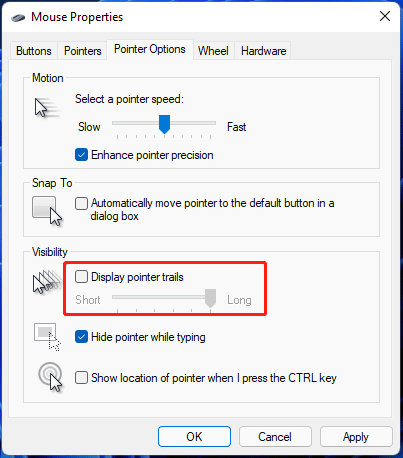
Enable and Disable the Scroll Inactive Option
Follow these steps to do this work:
- Open Windows 11 Settings.
- Go to Bluetooth & devices, click Mouse and switch the option of Scroll inactive windows when hovering over them several times to check if you have fixed the issue of mouse stuttering Windows 11.
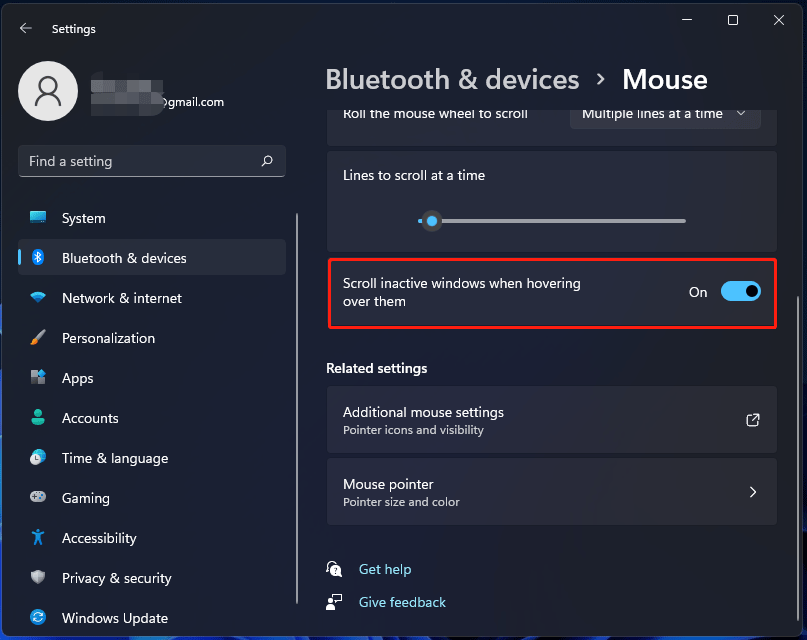
Set the Touchpad Sensitivity
This way applies to laptops and if your mouse stutters when moving fast on your laptop, you can try this solution.
- Launch Settings in Windows 11.
- Under Bluetooth & devices, go to Gestures & interaction and move the Cursor speed to change the mouse sensitivity.
Remove and Reconnect Your Bluetooth Mouse
If you are using a Bluetooth mouse, you can remove and reconnect it to your PC to see if Windows 11 mouse stuttering/lagging is fixed.
- Under the Bluetooth & devices settings page, you can all your connected devices.
- Click the three-bar menu and choose Remove device. Click Yes to confirm the operation.
- Then, click Add device and choose Bluetooth to re-add it by following the on-screen wizards.
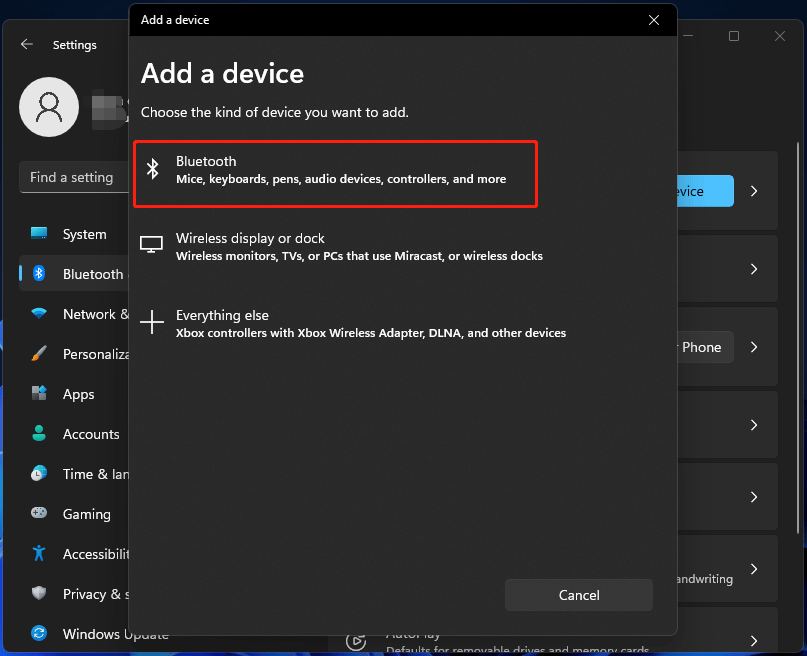
Reinstall Mouse Driver
To fix the issue of mouse lagging on PC in Windows 11, you can try to uninstall and reinstall the mouse driver if the problem is caused by the mouse driver.
1. Right-click on the Windows icon and choose Device Manager.
2. Expand Mice and other pointing devices, right-click on your mouse and choose Uninstall device.
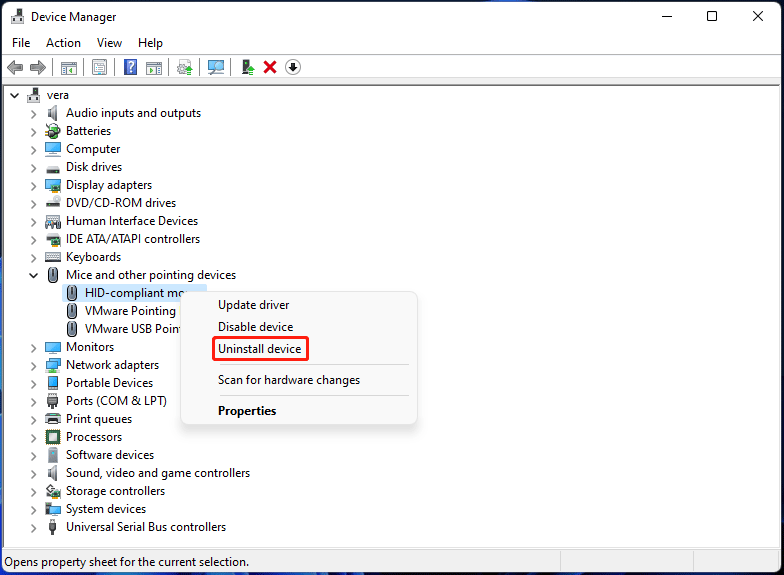
3. Click Uninstall to confirm the operation.
4. Restart your PC and Windows will install one mouse driver for your system.
Disable Adaptive Sync Settings
According to users, disabling adaptive sync is helpful to fix Windows 11 stuttering mouse. This fix applies to the situation – you have a monitor that supports NVIDIA Adaptive Sync (Freesync).
- Type in NVIDIA Control Panel to the search box and click the result.
- Under the Display tab, click Set up G-SYNC and uncheck the box of Enable G-Sync, G-Sync Compatible.
- Reboot the PC and let the change take effect.
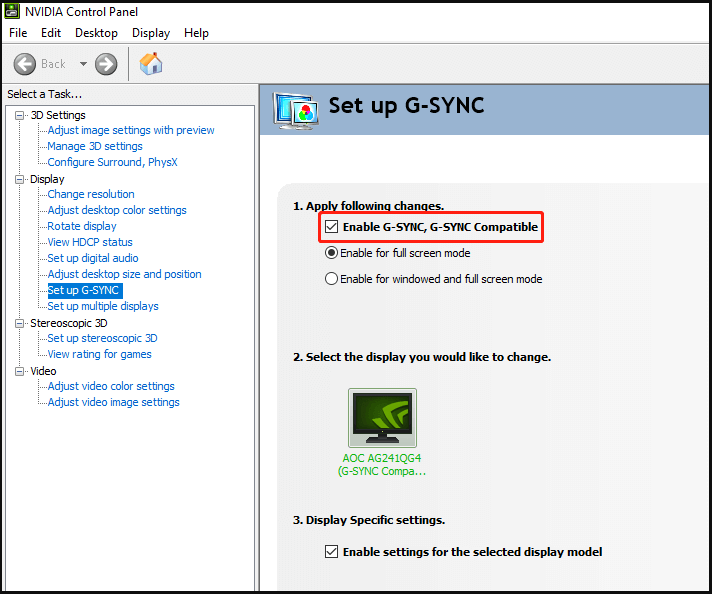
Final Words
That’s all the common solutions to fix the Windows 11 mouse bug issue. If your mouse stutters when moving fast or the mouse lags due to some reason, try these solutions and you can easily get rid of the trouble.
About The Author
Position: Columnist
Vera is an editor of the MiniTool Team since 2016 who has more than 7 years’ writing experiences in the field of technical articles. Her articles mainly focus on disk & partition management, PC data recovery, video conversion, as well as PC backup & restore, helping users to solve some errors and issues when using their computers. In her spare times, she likes shopping, playing games and reading some articles.
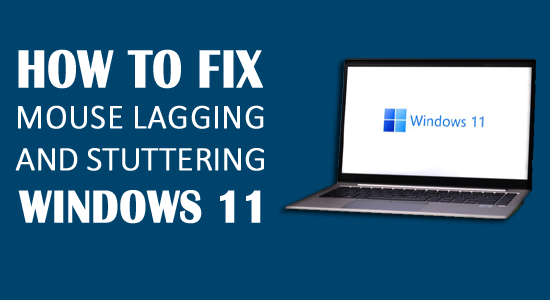
I’m on the latest build 22000.65 and whenever I open up Windows explorer my mouse is borderline unusable like it’s swimming through quicksand. Anybody else experiencing this issue?
Originally posted on Reddit.
Mouse lagging, stuttering, or freezing is a random bug encountered and reported by Windows 11 users.
Like Windows 10, this latest Windows 11 OS is not free from bugs and issues. And now, one of the major hindrances is mouse lagging and stuttering; it seemingly occurs while playing high-definition, resource-hogging games, videos, or sometimes simply while opening a Windows Explorer.
Well, explaining the mouse lags is inclusive, as it can be due to the old device issue, poor connectivity, outdated driver, and worn-out batteries.
The best way to fix Windows 11 mouse lag, stutter, or freeze is to install every pending update available. Microsoft releases various updates, builds, and cumulative updates as a hotfix directly related to performance, security, technical issues, and other errors in the OS.
Recently, it was confirmed by the Windows Insiders, that the latest Windows 11 Insider Preview Build 22000.132 has been released for everyone in the Dev and Beta Channels.
So check and install the available updates to solve most of the Windows 11 bugs and issues.
Moreover, if you don’t know how to check for Windows 11 updates, continue reading this guide and follow the steps listed to check and install Windows 11 updates.
Also, feel free to try other workable fixes tested and tried by the experts to fix Mouse lagging and stuttering in Windows 11.
To fix Windows 11 problems, we recommend Advanced System Repair:
This software is your one stop solution to fix Windows errors, protect you from malware, clean junks and optimize your PC for maximum performance in 3 easy steps:
- Download Advanaced System Repair rated Excellent on Trustpilot.
- Click Install & Scan Now to install & scan issues causing the PC problems.
- Next, click on Click Here to Fix All Issues Now to fix, clean, protect and optimize your PC effectively.
How to Check and Install Updates in Windows 11?
- Hit Windows + R keys > and in the Run dialog box that appears, type or paste ‘ms-settings:windowsupdate’ > hit Enter.
- If UAC (User Account Control) prompt appears, then click Yes for granting administrative access.
- And as the Windows Update screen appears, head and click on Check for Updates on the right-hand side.
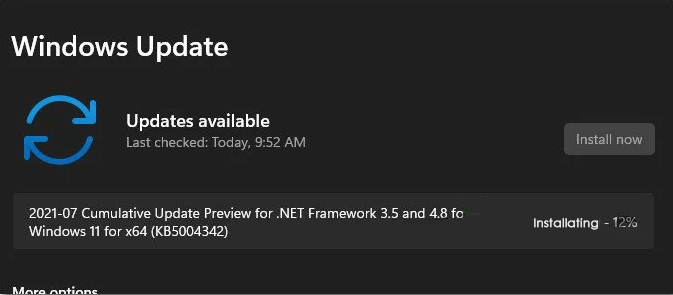
- If the latest updates are available, then click on Download Now button. It won’t start downloading automatically.
- Once the download is complete, the pending update installation starts to begin automatically (*but make sure your Windows Update preferences are set to default.)
- But if it won’t start installing automatically, install manually by clicking Install Now.
Please Note: You might get prompted to restart your system before installing the pending updates. In this case, simply reboot your PC and complete the pending update installation by following the steps.
Now, as the entire updates and builds are installed, check if the Windows 11 mouse lag and stutter problem are fixed or not.
If your mouse is still lagging, stuttering, or swimming on the desktop, try the fixes given one by one.
Before starting with the solutions, restarting a file explorer is a good option if you face a problem when the desktop appears or your file explorer opens up. Follow the steps to open file explorer (explorer.exe)
Solution 1– Update your Mouse Driver
The first solution I will suggest you update your mouse driver. Updated mouse drive can fix Mouse lagging and stuttering in Windows 11. So, follow the given below instruction to update your mouse drive:
- First, you must select Device Manager from the list by right-clicking on Device Manager.
- Now, Select Mice and other pointing devices.
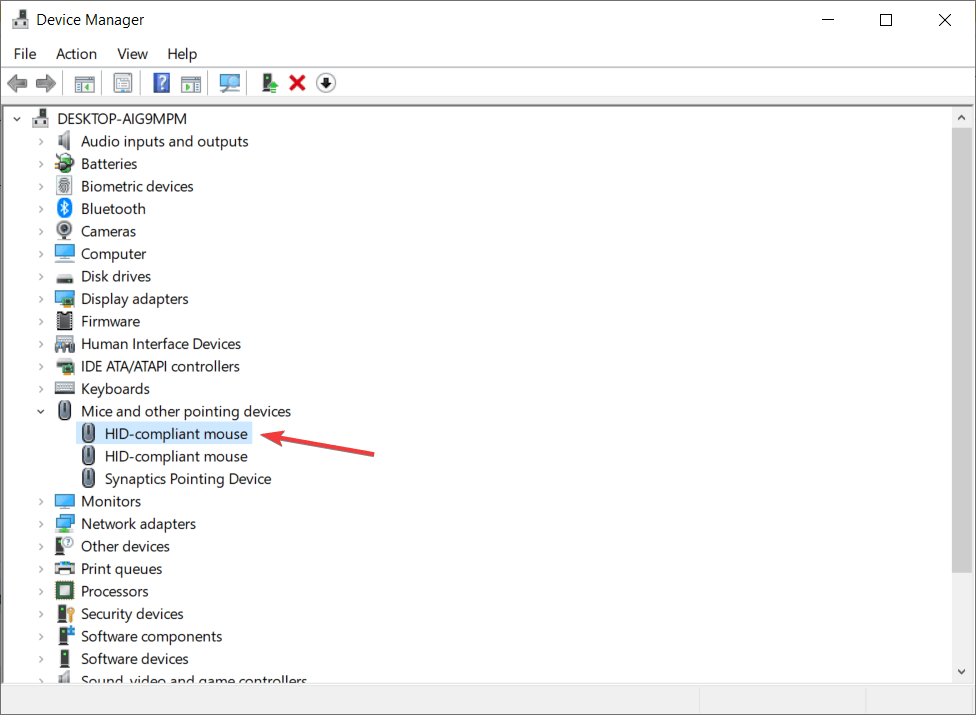
- Click on Update driver by opening the Driver menu.
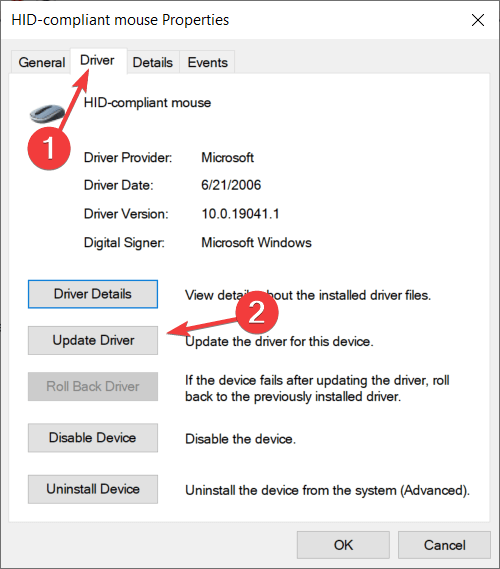
- In the windows, select Search automatically for driver options.
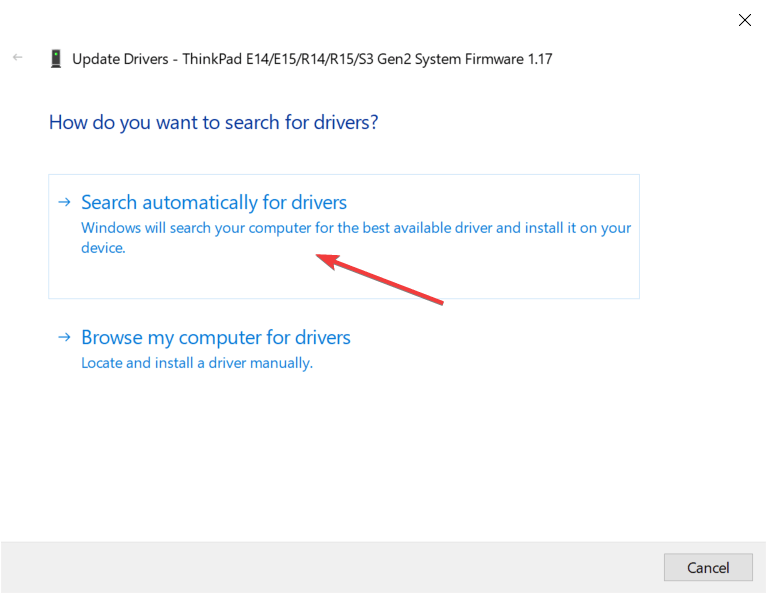
- The system will install if there are any new updates for your drivers, and then you have to restart the PC to see the changes.
- If you get any message like you already have the best drivers, then you have to click on the search for updated drivers on Windows updates.
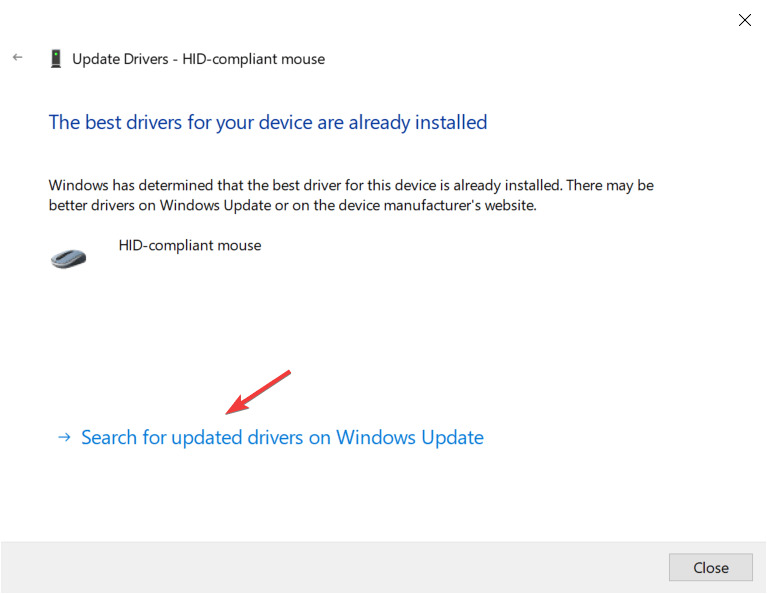
- A windows Update section will be opened. Then select View Optional Updates.
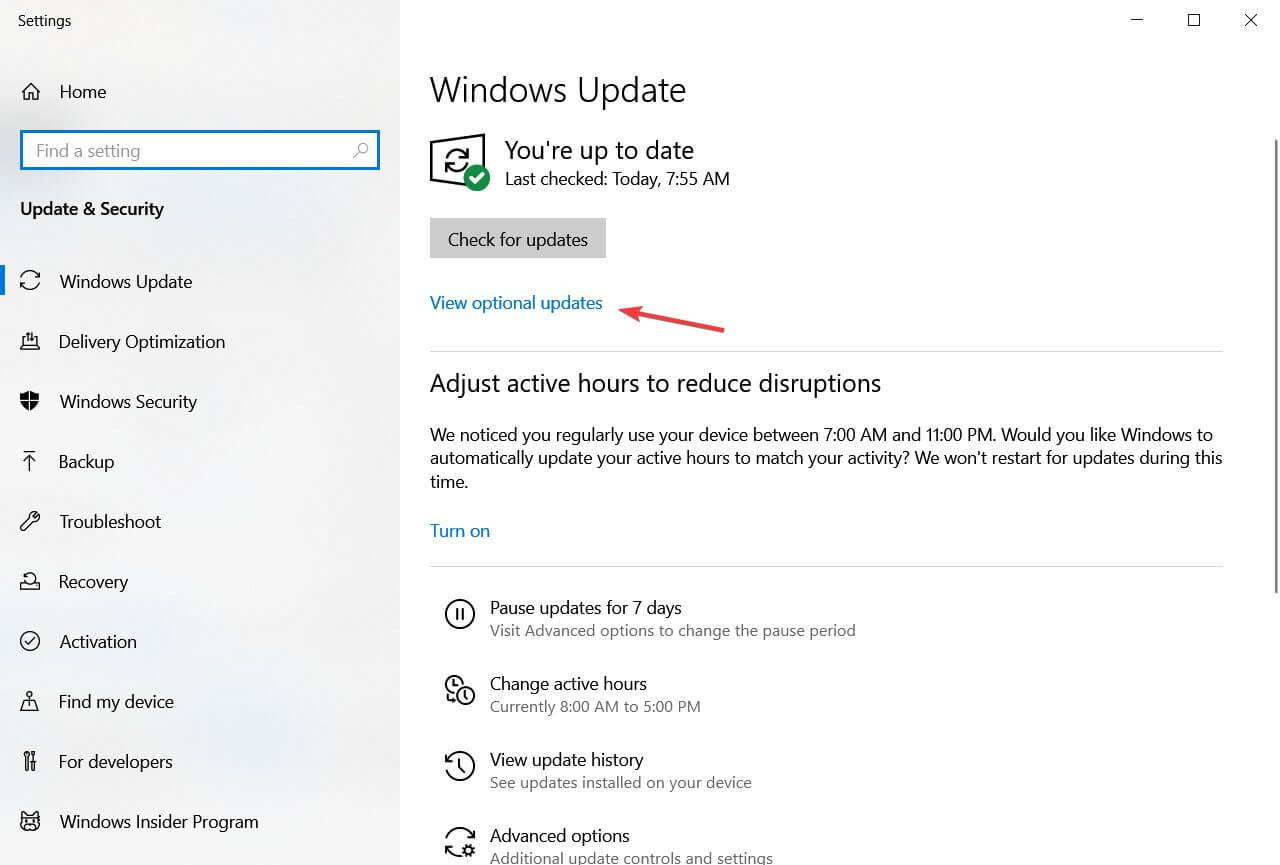
- Now, click on the driver updates, and look for mouse driver.
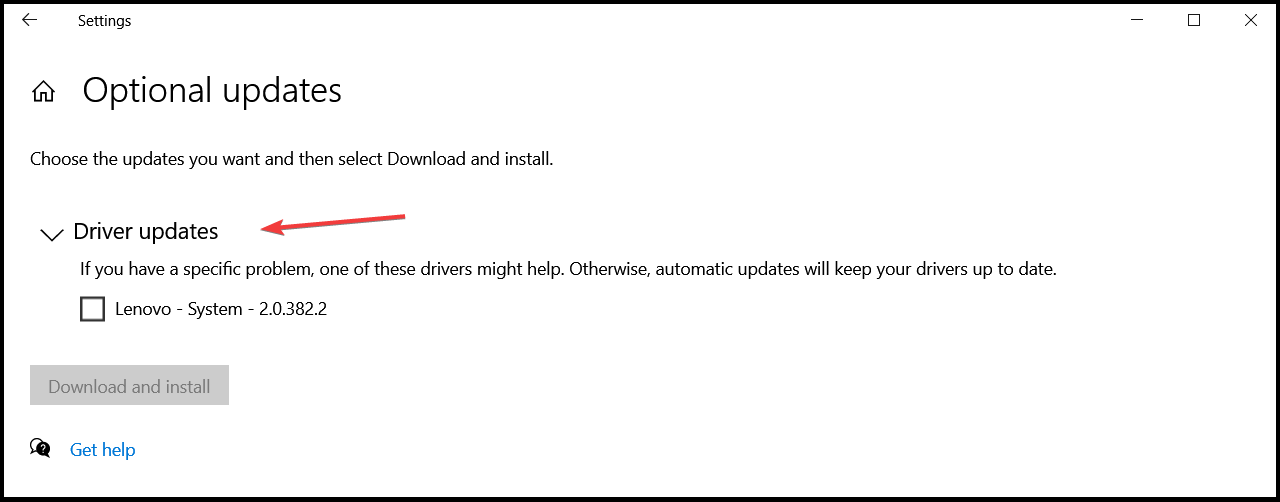
- If you get a mouse driver, check the box on the left; after that, click on the Download and install button.
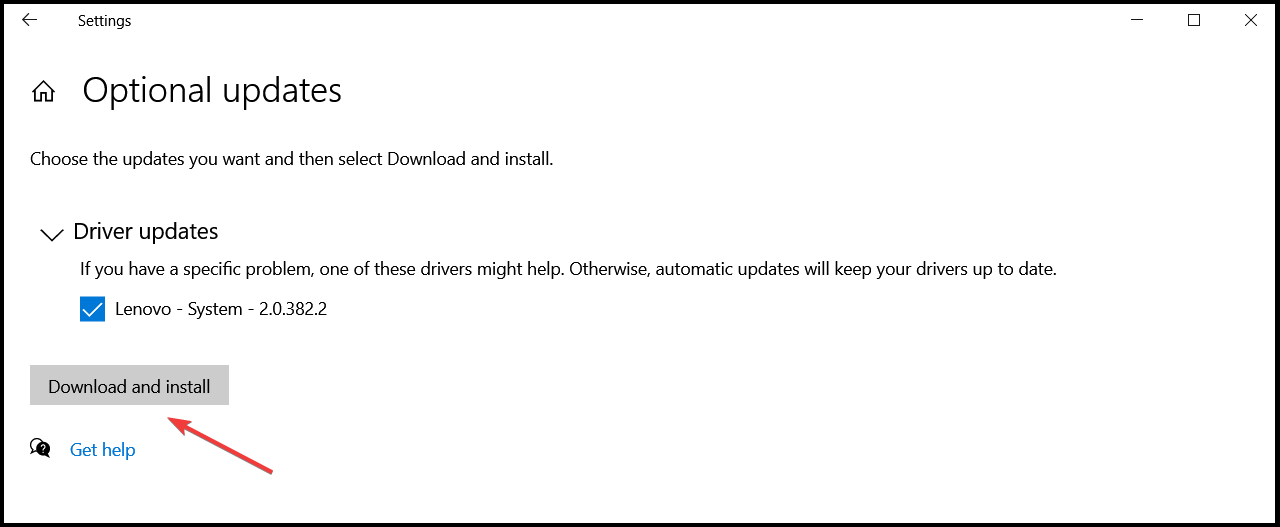
Many users said that the issue is fixed by installing the official driver of the mouse, but in some cases, Windows (10/11) automatically installs the default version of the mouse driver.
If you are using a branded mouse, you should download the latest drivers from the manufacturer’s website of your mouse model. Or else, you can update the Microsoft mouse drivers automatically with the automatic Driver Updater tool.
Get Driver Updater to Update Driver Automatically
Solution 2 – Disable Mouse Trails
In this solution, you have to disable mouse trails on your PC. To fix the trails, follow the given below instructions:
- First, press the Windows + R button
- Now, type main.cpl and press Enter. A Mouse Options will get opened.
- Then, Move to Pointer Options.
- A Visibility section will be seen. Uncheck the box Display pointer trails
- Click Apply and OK to save all the changes.
Now, restart you’re Windows PC. After that, it will disable mouse pointer trails and check if the Windows 11 stuttering problem is fixed.
Solution 3 – Disable and Enable Windows Scroll Inactive option
Here try to enable and then disable the Windows Scroll Inactive option. Follow the Instruction for Windows 11 PC:
- First, click on the Win key + X key together.
- Now, click on Settings.
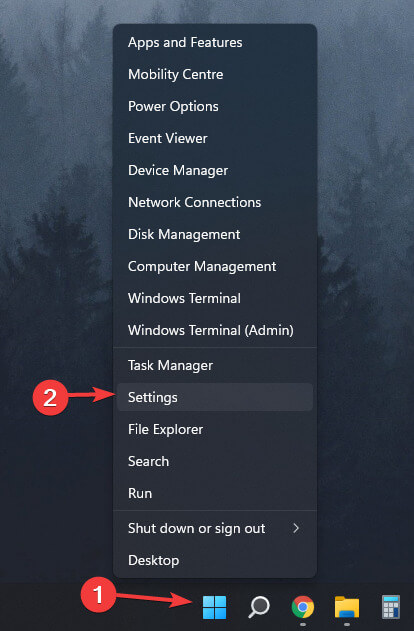
- Select Bluetooth and devices.
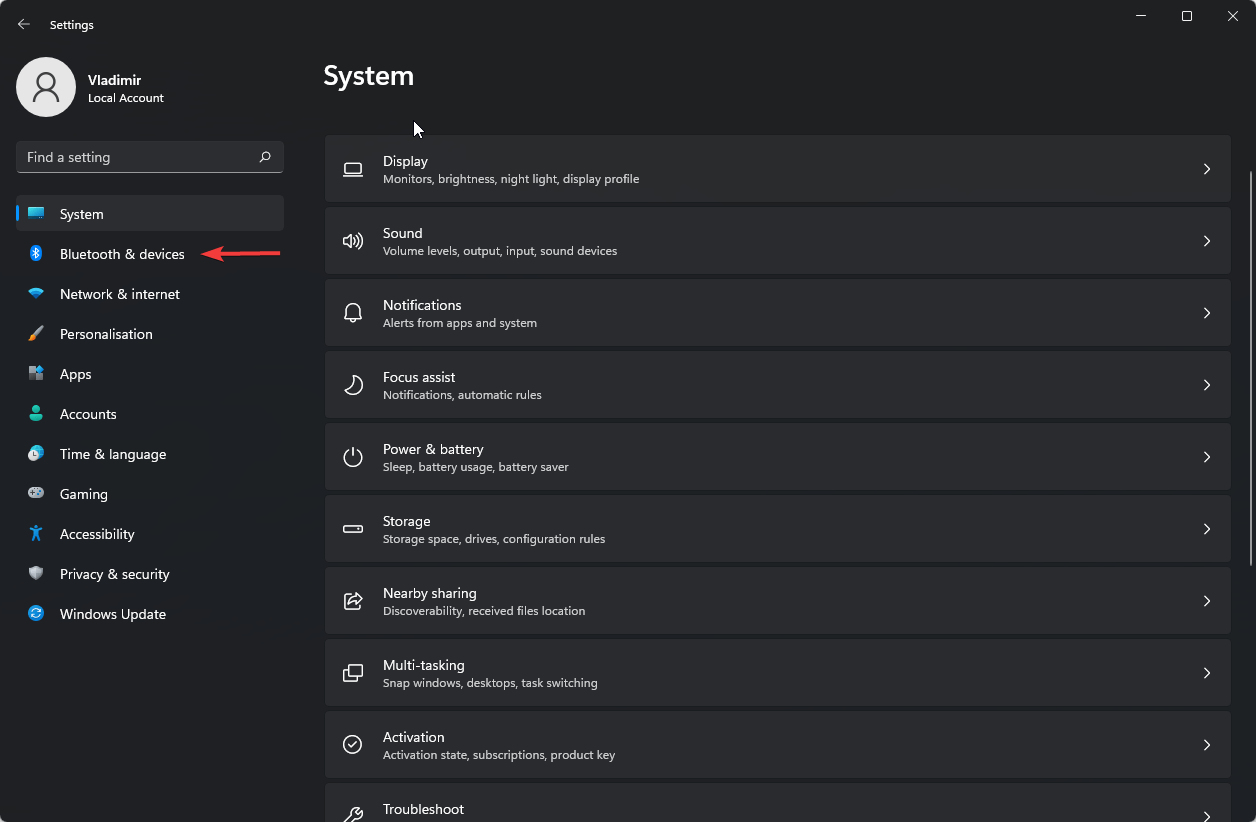
- Then, select the Mouse option.
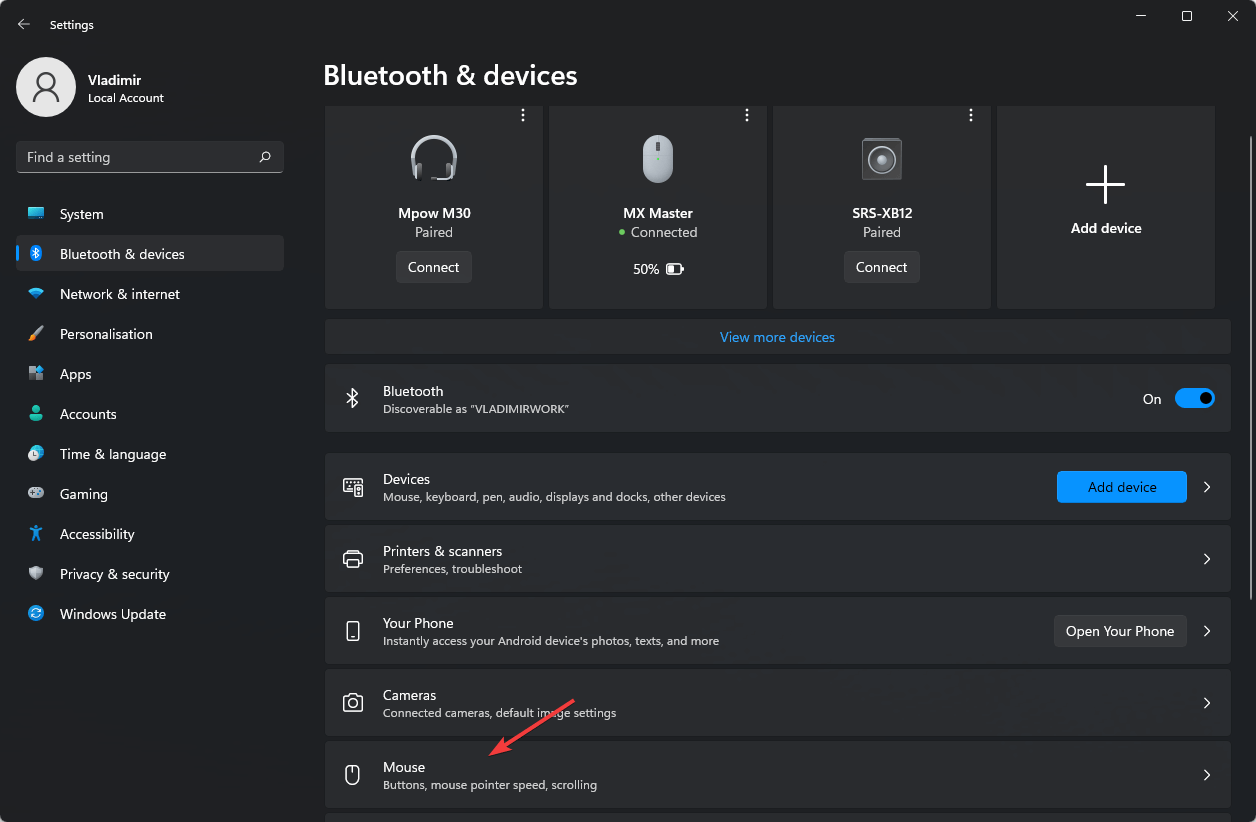
- Now, drag on and off the Scroll inactive windows when hovering over them option for few times.
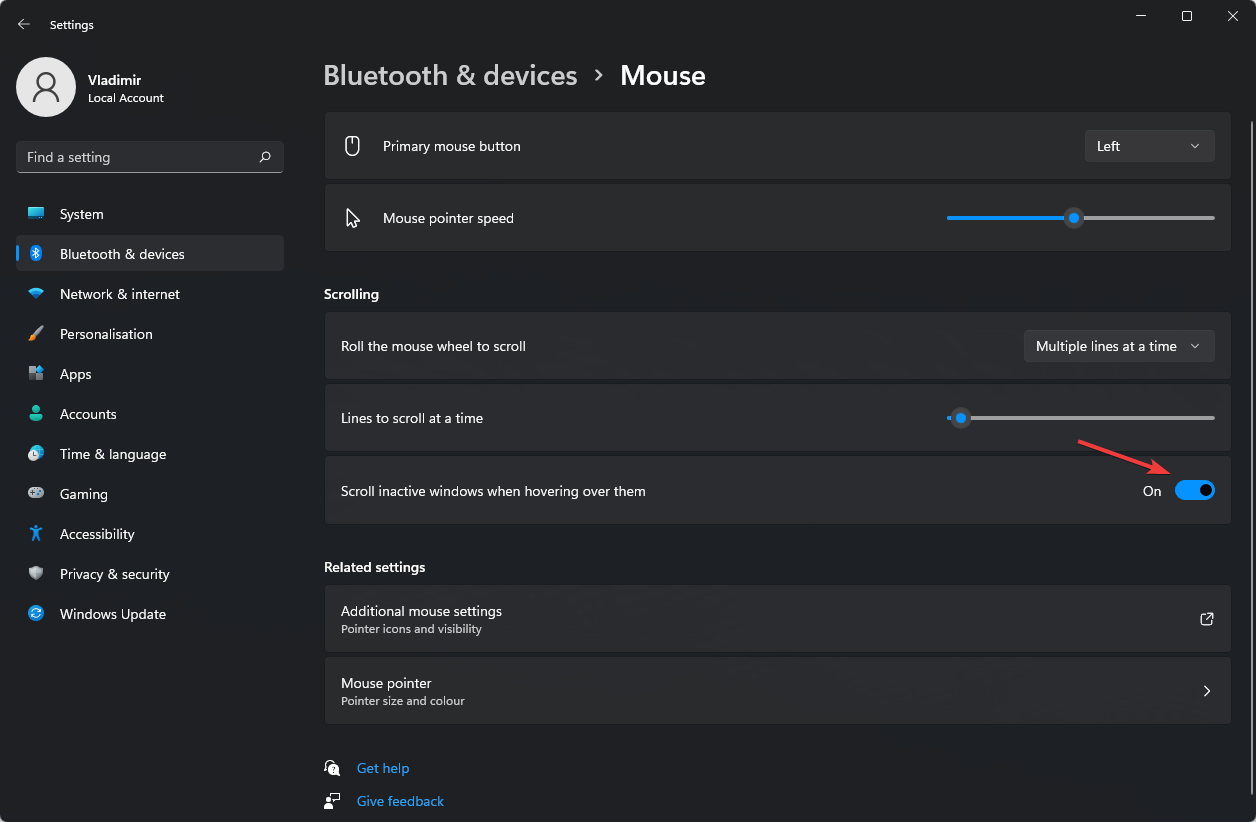
After that, check mouse keeps stuttering issue on Windows 11 is fixed or not.
Solution 4 – Set Touchpad Sensitivity
You can also set the sensitivity of the touchpad to fix touchpad lagging Windows 11. But this solution is not applicable to desktop users.
If you are using Windows 11 on your laptop and facing extreme mouse lag on Windows 11 then try the steps given:
- First, on the Windows Start button
- Now click on the Settings option
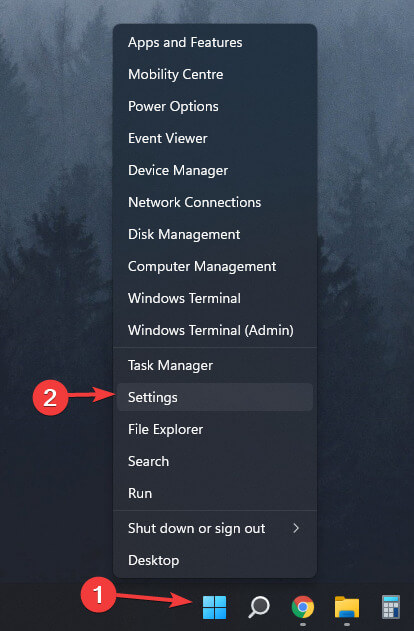
- Then, click on the Bluetooth and devices option.
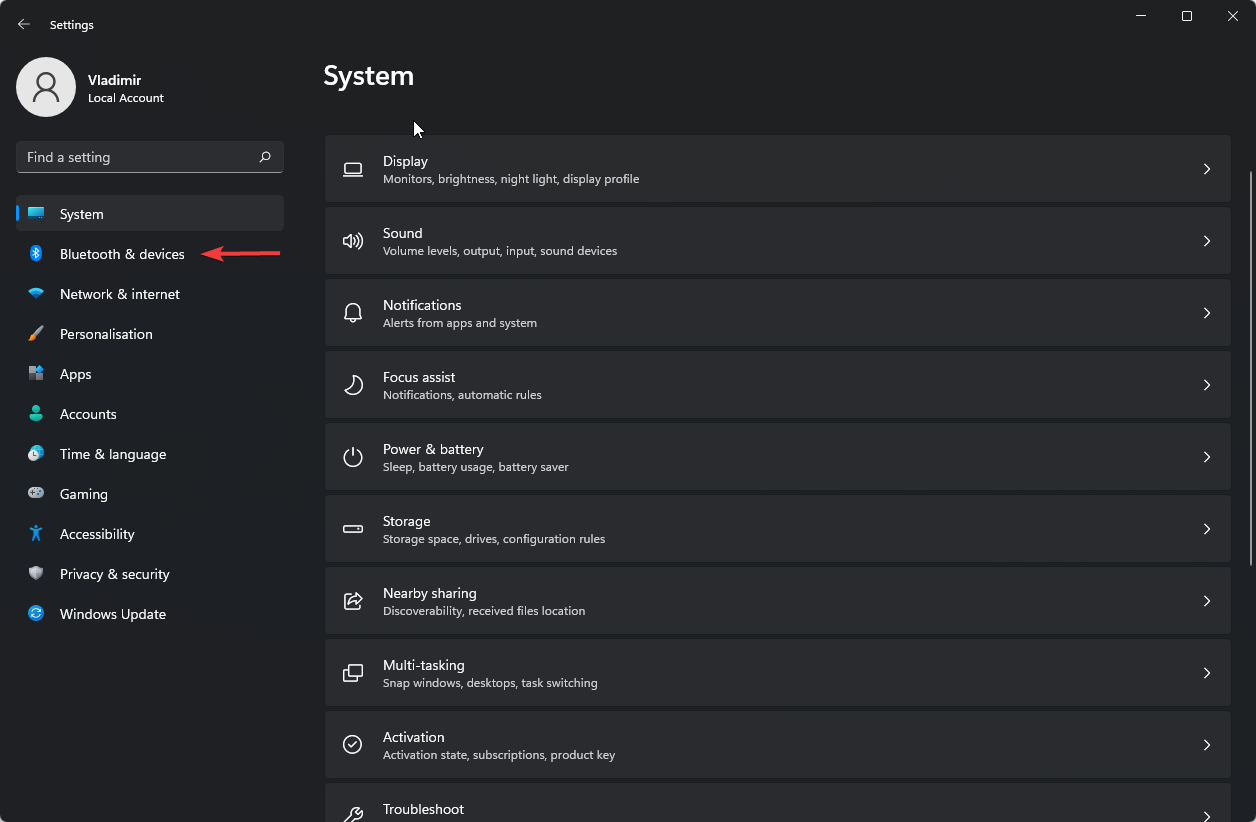
- Under the Gestures and interaction section
- Move the Cursor speed slider to change the sensitivity of the mouse
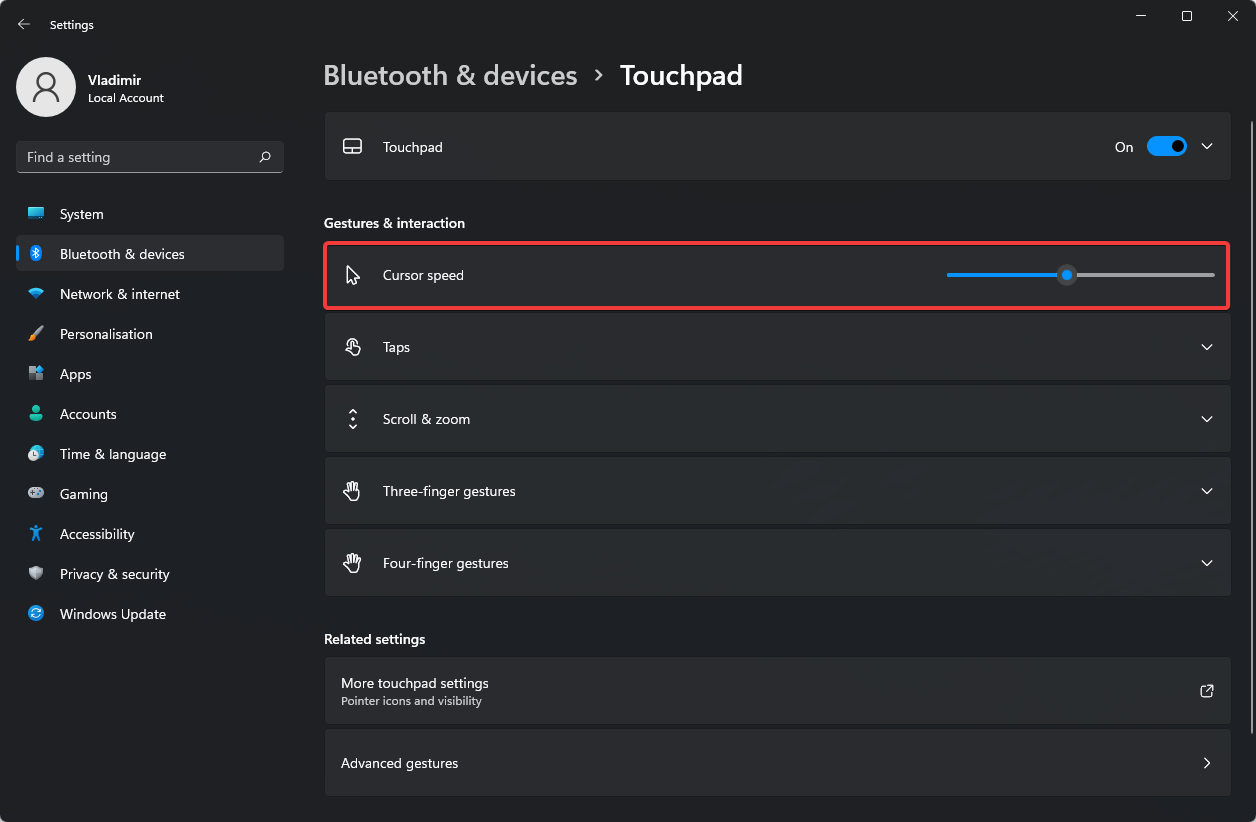
Solution 5 – Reconnect your Bluetooth Mouse
This solution is for you if you use a Bluetooth mouse on your Windows 11 PC. First, you have to remove the mouse and then reconnect it back,
To do so, follow the instruction below:
- Press Windows+I
- Move to Bluetooth & Devices, which is on the left side.

- Here you will see all the devices connected. Then click on the three-bar menu of the mouse, and then click on remove device.
- Now click on Yes to remove. Then this will remove the Bluetooth device from the system.
- Once the mouse is removed, click on Add device on the right side to add a Bluetooth mouse again.
- After adding the Bluetooth device, you have to click on the Bluetooth device and re-add it to your PC.
- Now, wait till the device gets connected and then press Done.
After reconnecting your Bluetooth mouse, check whether the mouse lagging Windows 11 is fixed or not.
Solution 6 – Reinstall Mouse Drivers
Try to uninstall and reinstall mouse drivers to fix Windows 11 mouse lag issue. Reinstalling of Mouse driver can fix any type of Mouse related issue. Follow the given below instruction to uninstall and reinstall mouse drivers:
- Press Windows + R.
- On the Run command, type devmgmt.msc and press Enter.
- After the Device Manager opens, expand Mice and other pointing devices” section.
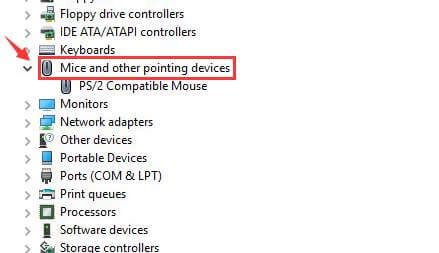
- On the mouth device, right-click on Uninstall Device.
- Then click on Yes to uninstall the mouse driver.
After completing the process restart your PC.
Solution 7 – Disable Fast Startup
You can disable the Startup feature if your mouse lagging and stuttering Windows 11. This Startup feature is very useful. To fix this problem, you have to follow the below-given instructions:
- Click on the Windows + S key together
- In the search box, type control panel, and then a list will appear; now select Control Panel.
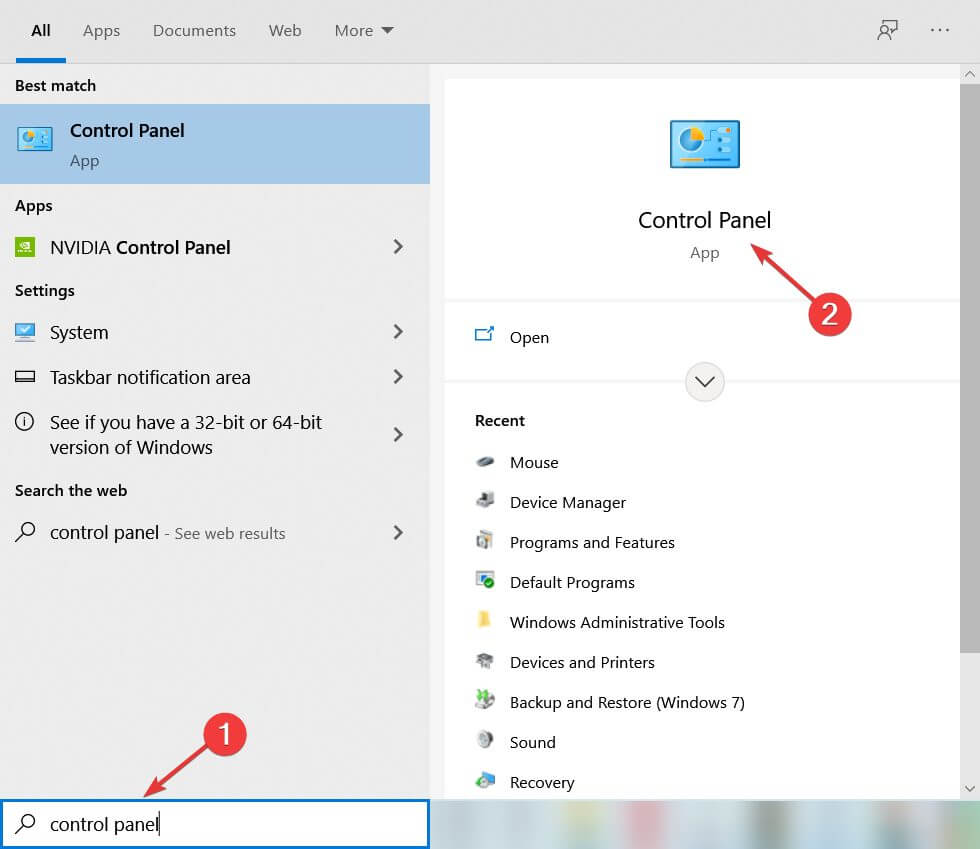
- Now select Power Options.
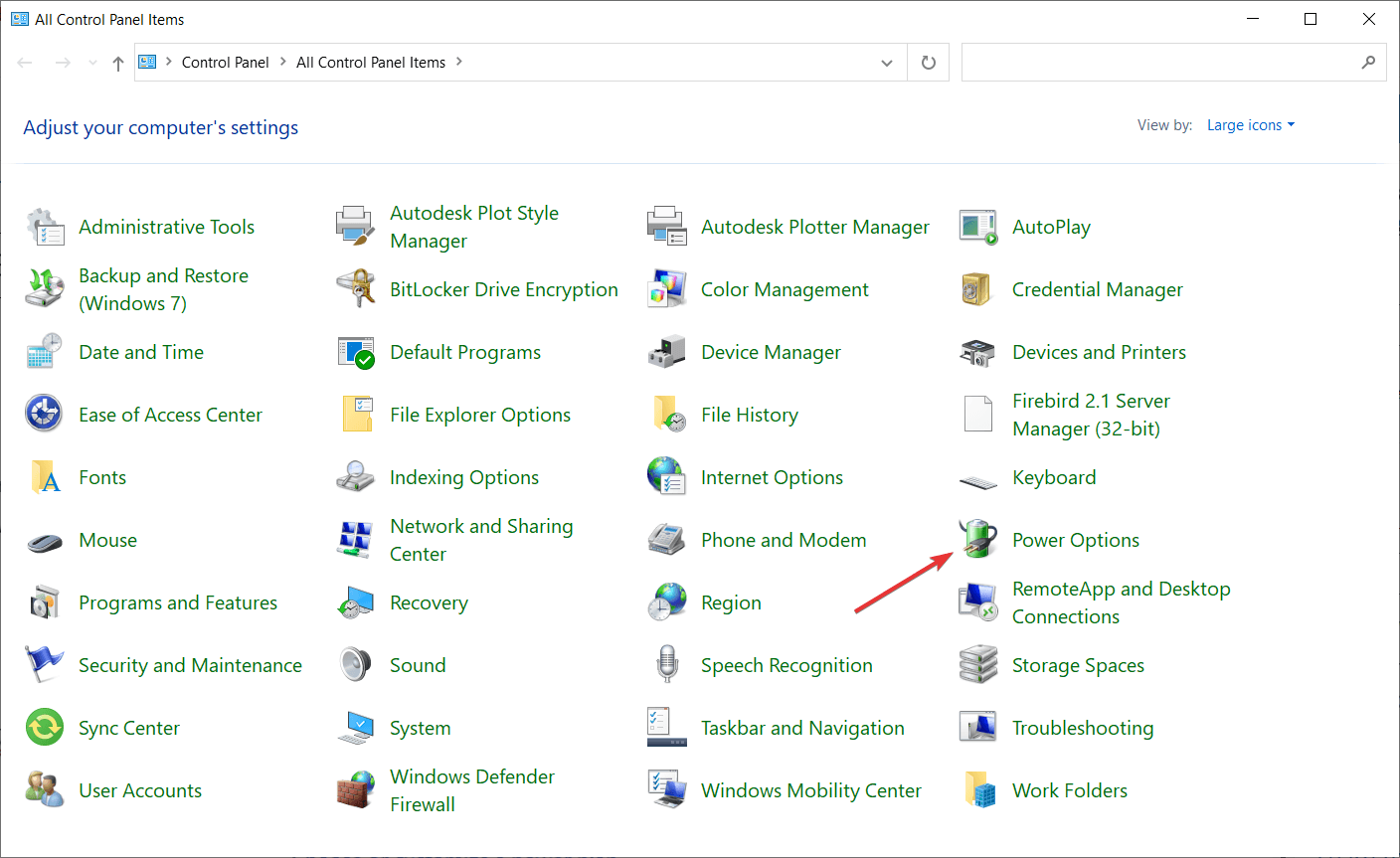
- Then click on Choose what the power button does.

- Click on Change settings that are currently unavailable.
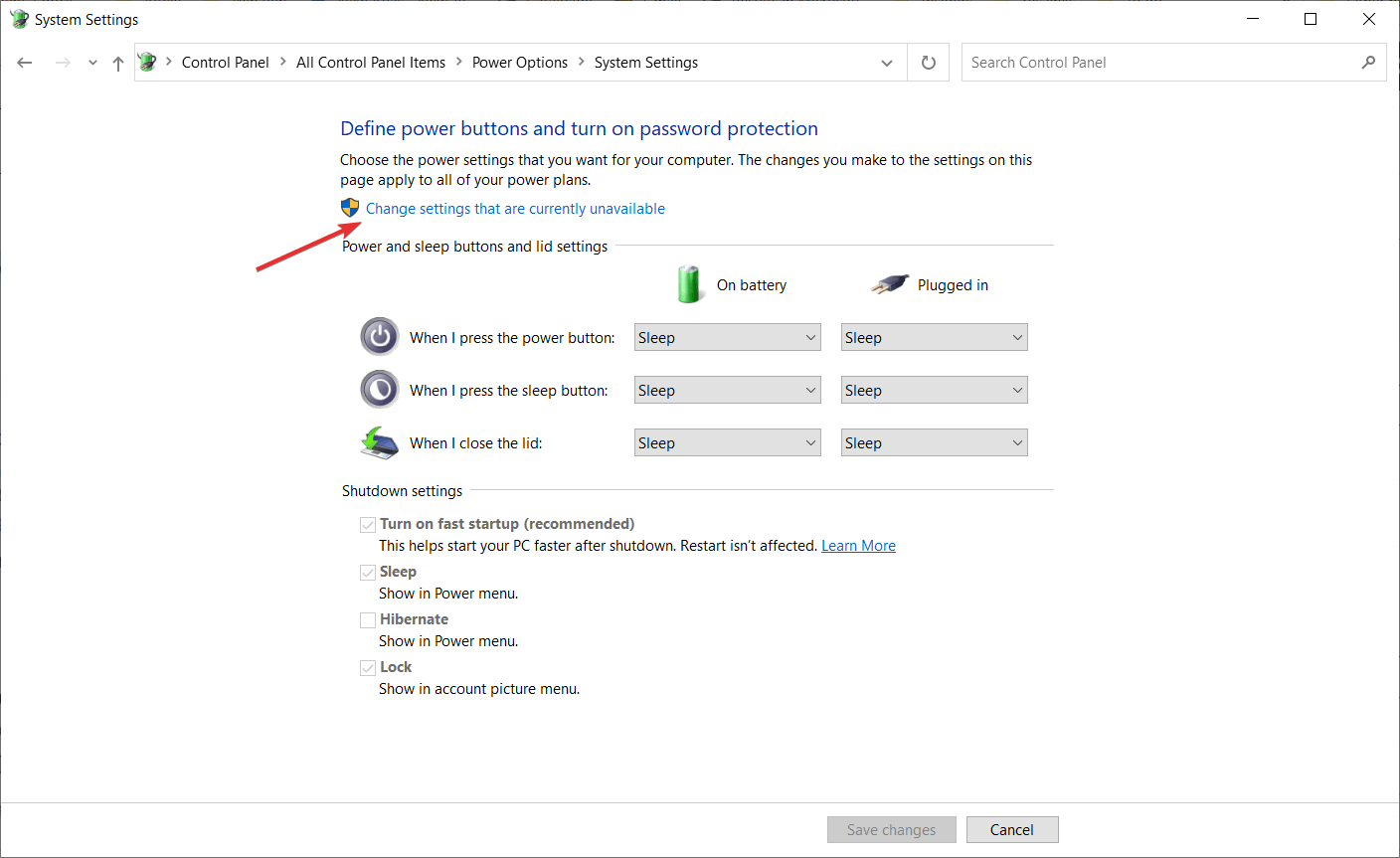
- Now, unclick the Turn on fast startup (recommended)
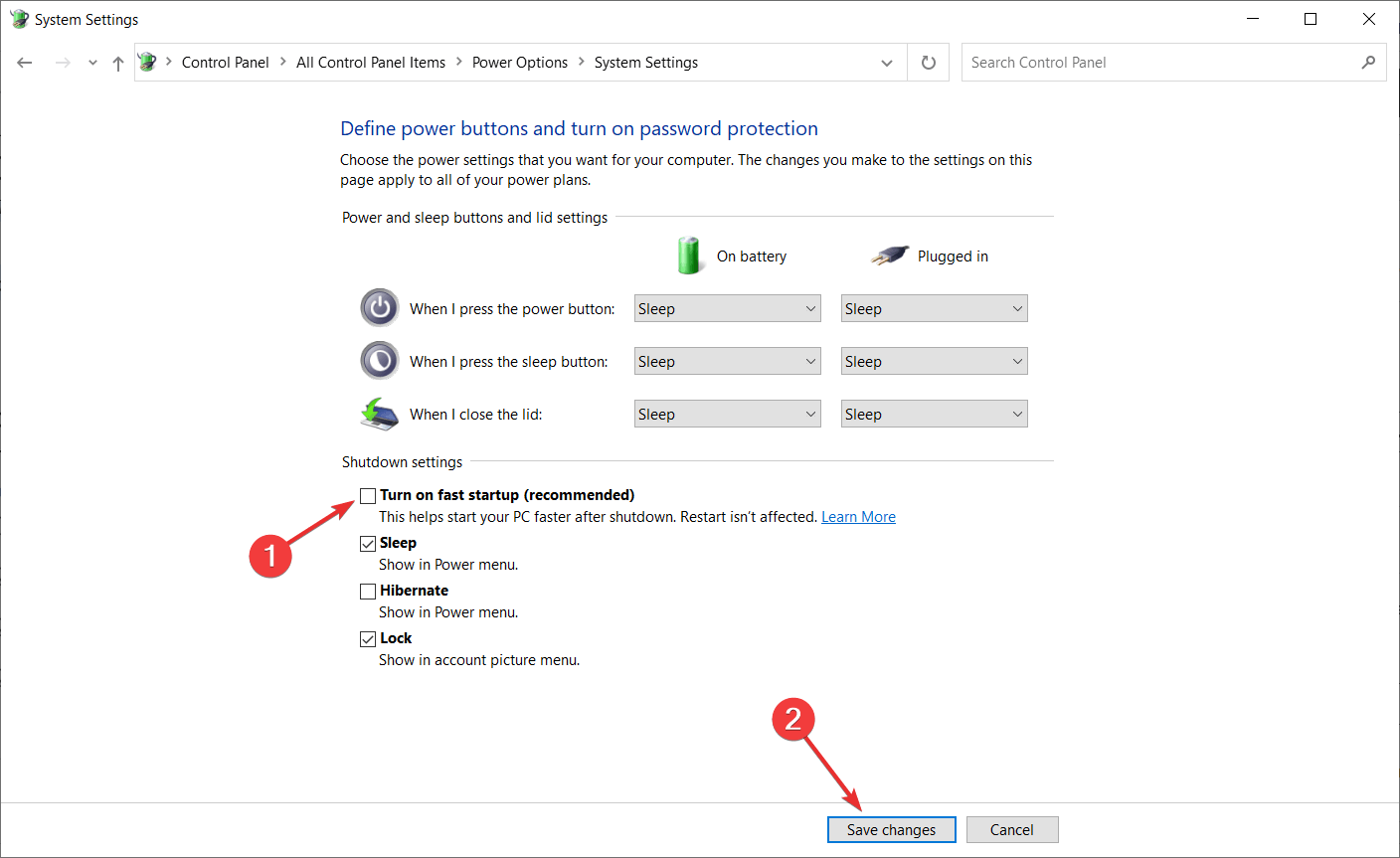
- After that, click on the Save button to save all the changes.
After completing the process, you can now use Mouse without any problem.
Solution 8 – Connect your Mouse Receiver to a USB 2.0 Port
The Mouse lagging and stuttering in Windows 11 issue can also happen with a wireless mouse. You can connect your mouse receiver to a USB 2.0 port to fix this problem.
Several users reported that after using this solution, they were able to get rid of the problem.
Solution 9 – Disable Adaptive Sync Settings
If your monitor supports NVIDIA Adaptive-Sync (Free sync), you can face Mouse freezes Windows 11 problems.
And to fix this problem, try disabling it. Follow the instruction given below:
- Click on the Windows icon and write “NVIDIA Control Panel”.
- In the search results, click on NVIDIA Control Panel.
- Under the Display Section, Look for Set up G-Sync.
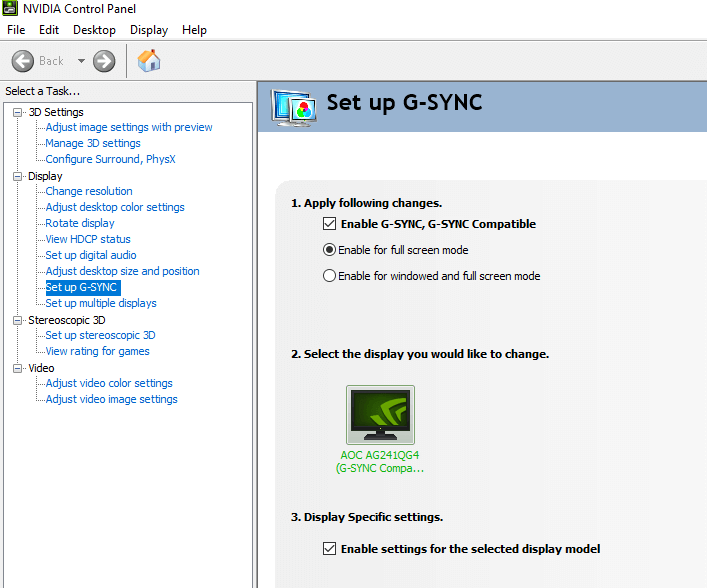
- Now, uncheck the box “Enable G-Sync, G-Sync Compatible” option.
- Close the NVIDIA Control Panel. And this will stop the mouse lagging and skipping problem.
If you cannot open the NVIDIA Control Panel on your PC, you can also read our step-by-step guide on – How to fix NVIDIA Control Panel not showing a problem?
Solution 10 – Change the Clickpad Settings
Try changing your Clickpad settings if you can still not use the mouse properly on Windows 10.
To do so, follow the given below instructions.
- Open Control Panel and move to the Mouse section.

- Navigate to Mouse Section > Clickpad Settings.
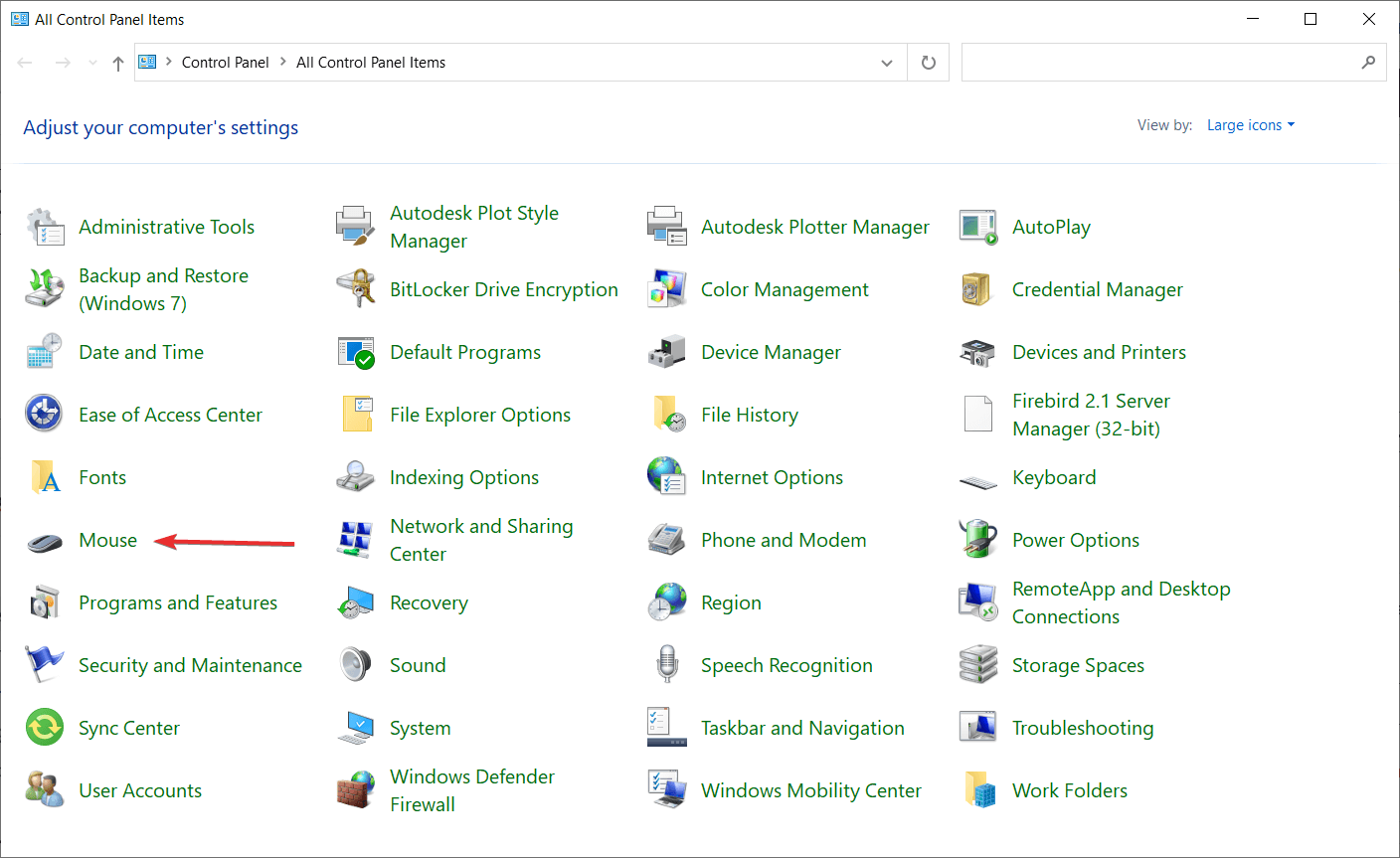
- Click on Advanced > select smart sense and set the Filter to 0.
Your problem will be resolved after following the above instructions.
Solution 11 – Decrease the Pooling Rate
If the mouse has a pooling rate above 500Hz, the mouse will lag while operating. Well, there are many tools available online that help you to decrease the pooling rate.
Moreover, you can use the Mouse Rate Checker tool to check the mouse pooling rate and solve the mouse lagging Windows 11 problem.
Follow these steps to check the mouse pooling rate –
- First, Extract the “mouserate” zip.
- Double click on the tool mouserate to run it.
- Now, Move your mouse to the box that says Move your mouse!
- In the average Box, check the average pooling rate and then click on OK.
- Then close the Mouse Rate Checker tool.
- Next, click on OK.
Now, close the Mouse Rate Checker tool.
If the average pooling rate is above 500, it must be reduced manually using a utility tool provided by the mouse manufacturer. You must opt for the pooling rate under 500 Hz to fix the Windows 11 mouse lag bug.
Solution 12 – Rollback Your Mouse Drivers to fix Mouse Lagging Problem
Try to roll back your mouse drivers, as this worked for users to get rid of the mouse problem. Once you roll back to its previous state, your issue will be resolved. Follow the below steps to roll back your drivers:
- First, click on the Windows + X Key together.
- Then select Device Manager from the list that appears.
- Find your mouse driver and then double-click on it.
- Now, click on the Driver tab.
- Then click on the Roll Back Driver button.
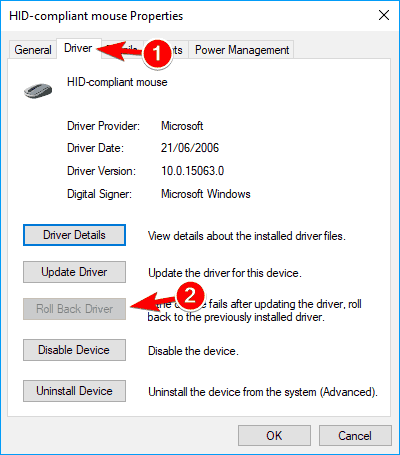
(Note: If your role back driver button is greyed out, then this solution does not apply to you)
After finishing the process, check whether mouse lagging Windows 11 is fixed or not.
Solution 13 – Make Changes in the USB Hub Power Management Options
Changes in the power management option might work for you to fix mouse stuttering Windows 11 issues. Follow the below-given instructions:
- First click on the Windows Start button
- A list will appear; select the Device Manager from the list.
- Click the USB Hub device to open the properties
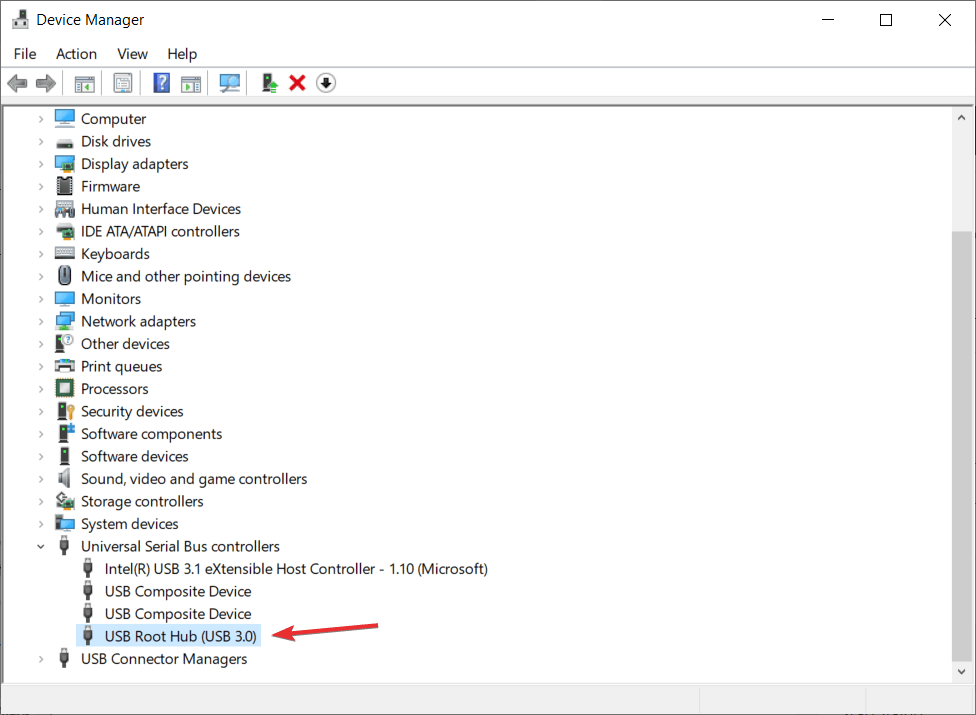
- Click on the power management option.
- Now, Uncheck the “Allow the computer to turn off this device to save power” option.
- And click on OK to save all the changes.
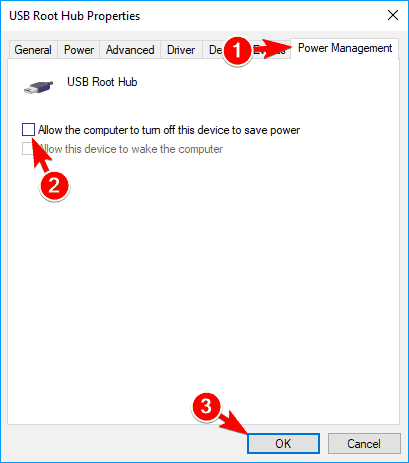
After saving the changes, you are now able to fix the problems. But, remember you have to follow the instructions given for all USB Hub devices on your PC. And the mouse-related bugs on Windows 11 are fixed.
FAQ Related to Mouse lagging, Freezing Windows 11 Problem
1: Why is My Wireless Mouse so Laggy?
The main reason responsible for the Wireless mouse lagging problem is the connection issues that usually occur when there is a long distance between mouse and the Bluetooth receiver, Bluetooth or WIFI interference.
2: Why is my touchpad lagging on Windows 11?
The Touchpad lagging problem usually occur when the operating system lags or stop responding. Despite this, the outdated drivers or some defective hardware can also cause the touchpad lagging Windows 11 problem.
3: Why does my Mouse keep Freezing Windows 11?
The corrupted mouse driver is most likely to cause mouse freezing or lagging problem. Despite this, tangled cables and the USB port or cables issues, loose cables, corrupted Windows system files, and low batteries can also result in mouse freezing problems on Windows 11.
Fix Common Windows Errors & Improve PC Performance
Scanning your system with the professional and multifunctional PC Repair Tool is suggested to fix various Windows issues and errors. This advanced tool scans your computer, detects issues, and solves them automatically.
It fixes common PC errors and bugs like preventing file loss, protecting your system from viruses and malware, repairing corrupted system files, repairing registry entries, and much more.
So, download and install the tool to quickly fix typical Windows problems and optimize the PC performance.
Get PC Repair Tool to Make Your Windows PC Error-Free
Conclusion
This article will teach you how to troubleshoot Mouse lagging and stuttering Windows 11.
The solutions listed are the most effective and work for many users to solve Windows 11 mouse freezing issues. Follow all the solutions one by one until you eliminate this problem.
I hope you find the article helpful and that it managed to circumvent mouse lags, stutter, or freeze issues altogether.
If you have any questions or suggestions regarding this article, you can share them with us on our Facebook page.
Good Luck..!
Hardeep has always been a Windows lover ever since she got her hands on her first Windows XP PC. She has always been enthusiastic about technological stuff, especially Artificial Intelligence (AI) computing. Before joining PC Error Fix, she worked as a freelancer and worked on numerous technical projects.
Just like its predecessor, Windows 11 is currently plagued by some kind of bug that ends up creating mouse lagging and stuttering. This primarily seems to occurring during full-screen, resource-demanding activities like playing games or editing an image or video or when the desktop screen is visible.

After digging around for potential causes, we actually find several different scenarios that might be responsible for creating this weird issue on Windows 11. Here’s a list of situations where you can expect to experience mouse lagging and stuttering on Windows 11:
- Microsoft Fix is not installed – Microsoft insiders have already confirmed that a fix for this particular issue will arrive soon via a Windows Update. Although we don’t know the exact date or type of update that will enforce this fix, it’s good practice to install every pending Windows Update. Who knows, maybe the problem will resolve automatically without you needing to do any type of troubleshooting.
- File Explorer bug – The majority of user documented cases in which this problem occurs are somehow related to File Explorer. If you’re only experiencing this issue while File Explorer is opened in the background but you’re not actively using it, one way to resolve the issue temporarily is to use Task Manager to restart the main process behind File Explorer.
- Conflicting Pooling Rate – As it turns out, this type of mouse stuttering on Windows 11 is often associated with a high mouse polling rate (typically only available for high-end mouses). As of now, the only way to resolve this issue is to lower the pooling rate (Reporting Rate) to 500 HZ or lower.
- Nvidia Game Ready glitch – If you’re experiencing this with an Nvidia GPU and you’re using the Game Ready driver experience, you should be able to alleviate the problem by switching over to the Studio Drivers. If you’re a gamer, making this change won’t affect your average framerates in any significant way.
- Adaptive Sync is Enabled – As of now, Windows 11 is very unreliable when forced to use Adaptive sync (freesync) from Nvidia (GSync) on 4k monitors with a high refresh rate. Until Microsoft irons out this bug, you should be able to fix your mouse stuttering issues by disabling G-Sync from Nvidia’s control panel.
- Mouse Trail bug – If you’re a fan of mouse trails, Windows 11 will probably force you to get rid of it if you don’t want to experience mouse lags. It’s been confirmed that disabling this mouse effect helps in reducing the mouse stuttering that’s currently affecting Windows 11.
Now that you are familiar with the most common causes that might be triggering this type of problem on Windows 11, here’s a couple of methods that other users dealing with the same mouse stuttering and lagging have used to fix the issue temporarily or permanently.
Update Windows to the latest version
If you’re on Windows 11 build 22000.100 and you’re experiencing mouse stuttering and lagging only when the desktop is visible, the problem is most likely occurring due to a Dev Channel bug that Microsoft is currently patching.
Microsoft insiders have confirmed that a hotfix for this issue is already on the way and will arrive as part of a cumulative update for Windows 11.
To take advantage of it, all you need to do is install every pending update that is currently waiting to be installed.
If you’re looking for specific instruction on how to do this, follow the instructions to learn how to install every pending Windows 11 update:
- Press Windows key + R key to open up a Run dialog box. Next, type ‘ms-settings:windowsupdate‘ inside the Run’s text box and press Enter to open up the Windows Update screen.
Installing Windows Update - If you’re prompted by the UAC (User Account Control), click Yes to grant administrative access.
- Once you’re inside the Windows Update screen, move over to the right-hand side of the screen and click on the Check for Updates button.
Check for Updates button - If new updates are found, Windows 11 should automatically begin to download it. If this doesn’t happen, click on Download Now to start the download.
- After the download is complete, the installation of the pending update should begin automatically (if you have the default WU preferences).
Install Windows Updates automatically Note: If the installation of the updates doesn’t start automatically, click on Install Now.
- Keep in mind that in the event that you have a lot of pending updates, you will be prompted to restart before WU gets the chance to install every pending update – If this happens, reboot as instructed, but make sure to return to this particular Windows Update screen to complete the installation of the remaining updates.
Restart File Explorer
If you’re encountering this type of issue while doing something while the desktop is visible or while you’re playing a game in full screen, chances are you’re suffering from the notorious File Explorer bug.
According to a lot of users, you can expect to see this particular type of mouse stuttering when the main process behind File Explorer is stuck in a limbo state.
This will certainly be patched by Microsoft eventually, but if you don’t want to wait, you can resolve the issue promptly by restarting the main process of File Explorer (explorer.exe).
Here’s how to restart the main explorer.exe process via Task Manager in order to stop the mouse lagging from occurring on Windows 11:
- Press Ctrl + Shift + Esc to open up Task Manager.
- If the simplified version is opened by default, click on the More Details hyperlink.
Show more details in Task Manager - Next, once you ensure that you’re using the detailed version, access the Processes tab, then scroll down through the list of Apps and locate Windows Explorer.
- Next, right-click on Windows Explorer and choose Restart from the context menu that just appeared.
Restart the File Explorer service - Once the main Windows Explorer process has been closed, resume your normal activity and see if the mouse lagging/stuttering has been resolved.
If the problem is still not fixed, move down to the next potential fix below.
Lower the pooling rate (if applicable)
As it turns out, using a high-end mouse on Windows 11 can actually be detrimental to your experience on Windows 11. We’ve managed to identify a lot of user reports that we’re experiencing issues when using a mouse with a pooling rate of over 500 Hz.
Currently, Windows 11 is known to cause inexplicable stuttering when the pooling rate of the connected mouse is set to 1000 Hz. This is confirmed to happen with every other major manufacturer including Logitech, Steelseries, and even Microsoft products.
While this is certainly going to be patched in the future, the only viable fix, for now, is to reduce the pooling rate of your mouse in order to make the mouse lag go away.
You can check if your current mouse pooling rate is higher than 500 Hz by using a 3rd party utility like Mouse Rate Checker.
But keep in mind that changing the pooling rate is a different process depending on your mouse manufacturer.
While some manufacturers include a dedicated utility that will allow you to do this from one of the menus, other mouse models (particularly gaming models) might also include a physical button that will allow you to rapidly switch from 1000 HZ to 500 HZ.

Note: Keep in mind that a lot of mouse manufacturers will refer to the Pooling Rate as Report Rate.
If this scenario is not applicable in your particular case, move down to the next potential fix below.
Install the Studio Drivers (Nvidia GPUs Only)
If you’re using an Nvidia GPU and you’re mainly encountering this type of issue while gaming, you might be able to fix the issue by installing the Studio Drivers instead of the default Game Ready equivalents.
This method is kind of a mixed bag, with some users reporting that it ended up fixing the issue permanently, while others are saying that the mouse stuttering has eventually returned on Windows 11.
Note: The difference between the Game Ready Drivers and the Studio drivers is that the Studio drivers have been optimized for certain GPU-depending apps like 3ds Max, Adobe Premiere, Maya, DaVinci Resolve, etc. Installing the Studio driver equivalent will not affect the in-game performance in any significant way.
If you’re using an Nvidia GPU and you’re willing to make the transition to the Nvidia Studio drivers, follow the instructions below for step by step instructions on how to do this:
- Press Windows key + R to open up a Run dialog box. Next, type ‘appwiz.cpl’ inside the text box and press Enter to open up the Programs and Features menu.
Open up the Programs and Features menu Note: If you’re prompted by the User Account Control prompt, click Yes to grant admin access.
- Once you’re inside Programs and Features menu, click on Publisher to order the list of installed programs according to their Publisher.
- Next, locate every entry published by Nvidia Corp, then systematically right-click every item and choose Uninstall from the context menu until every driver and supporting driver related to your Nvidia GPU is uninstalled.
Uninstall every Nvidia GPU driver - Next, visit the official download page of the Nvidia Studio Driver and download the latest version according to your GPU model. Make sure to select Windows 11 as the operating system and change the Download type to Studio Driver (SD).
Finding the correct studio driver - Once the correct driver is identified, click on Download once you’re ready to download the Studio driver installer locally.
Downloading the Nvidia Studio driver - Once the download is complete, double-click on the driver installer and click Yes at the User Account Control prompt.
- At the initial extraction window, click Ok and wait until the Studio driver is unpacked.
Unpacking the driver - Once the driver is unpacked, accept the Licence Agreement by clicking on Agree and Continue. , then follow the on-screen instructions to install the Studio drivers provided by NVIDIA.
Installing thre latest studio driver Note: It’s up to you if you want to also install GeForce Experience or not.
- At the end of this procedure, restart manually if you’re not prompted to do so automatically.
- After your computer boots back up, use your Windows 11 PC normally and see if the problem is now fixed.
In case you’re still experiencing the same type of mouse lagging and stuttering, move down to the next potential fix below.
Disable adaptive Sync (if applicable)
Another potential scenario that might cause this particular behavior is an Nvidia-specific feature called Adaptive sync (Freesync). Mouse stuttering caused by adaptive sync is actually reported on 4k monitors with a high refresh rate (typically with 144 HZ).
Although it’s unclear what exactly is causing this behavior and Microsoft didn’t comment on this officially, affected users have confirmed that disabling Adaptive-Sync resolved the issue permanently.
So if you don’t want to wait for Microsoft or Nvidia to patch this issue and you aren’t too bothered by the fact that you won’t be allowed to use freesync, disabling Adaptive-Sync from your Nvidia Control Panel settings should take care of the mouse lagging issues.
Here’s what you need to do to disable adaptive sync:
- Press Windows key + S to open up the Search function on Windows 11.
- Use the search function at the top to search for ‘Nvidia Control Panel‘.
- From the list of results, click on Nvidia Control Panel.
Accessing Nvidia Control Panel - Once you’re inside Nvidia Control Panel, click on Set Up G-Sync (under Display) from the vertical menu on the left.
- Next, move over to the menu on the right and uncheck the box associated with Enable G-Sync, G-Sync Compatible.
Disabling FreeSync - Finally, restart your computer in order to make the changes permanent and monitor the situation to see if the mouse lagging issue is now fixed.
If the same kind of issue is still occurring even after you successfully disabled Adaptive-Sync or this technology is not supported by your monitor, move down to the next potential fix below.
Disable Mouse Trails (if applicable)
If you’re using any kind of mouse trails on Windows 11, you might want to disable this effect if you want to prevent this mouse lagging issue. Most users dealing with this problem have reported that while this issue doesn’t fix the mouse stuttering entirely, it makes things slightly better.
This is certainly a bug that’s only occurring on the insider dev builds of Windows 11, and the only viable fix as of now is to disabling mouse trails altogether until Microsoft becomes aware of this issue and fixes it at a system level.
If you’re currently using a mouse train effect and you’re experiencing mouse lagging on Windows 11, follow the instructions below to take care of the issue:
- Press Windows key + R to open up a Run dialog box. Next, type ‘control’ inside the text box and press Enter to open up the Classic Control Panel interface. If you’re prompted by the User Account Control window, click Yes to grant admin access.
Opening the Classic Control Panel - Once you’re inside the Classic Control Panel interface, type ‘mouse’ in the search function in the top-right corner and press Enter.
- Next, from the list of results, click on Mouse.
Accessing the Mouse settings - Once you’re inside the Mouse Properties screen, access the Mouse Pointers tab from the menu at the top.
- Next, go down to the Visibility section and uncheck the box associated with Display pointer trails.
Display pointer trails - Once you make the change, enforce it by clicking Apply and restarting your computer.
- After your computer boots back up, see use your Windows 11 PC as you would normally do and see if the mouse lagging issue is now resolved.
















